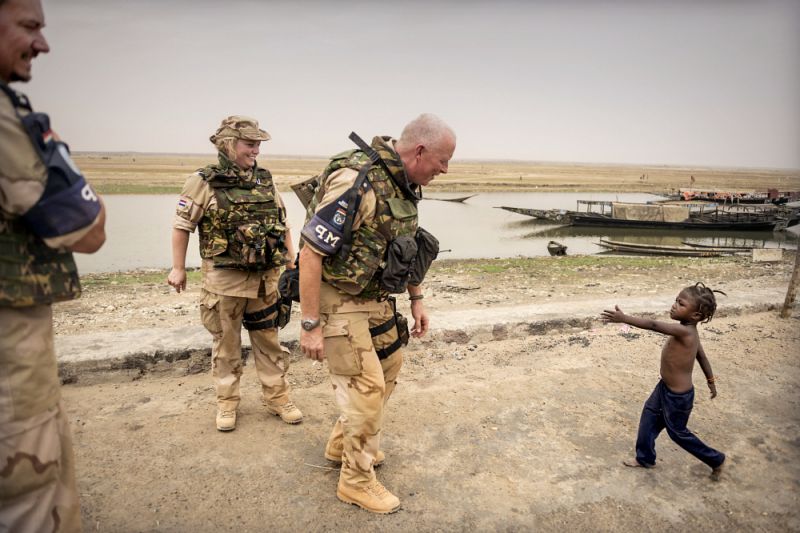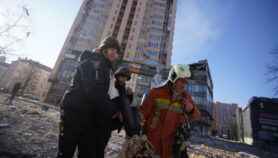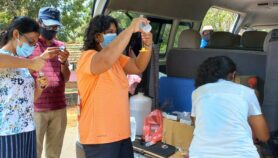By: Edd Gent
Send to a friend
The details you provide on this page will not be used to send unsolicited email, and will not be sold to a 3rd party. See privacy policy.
Divisions between the people on either side of the Sudan-South Sudan border run deep. South Sudan’s declaration of independence in 2011 has yet to end the decades-long conflict between Misseriya Muslims and Dinka Christians.
The region is also chronically underdeveloped. “There’s not just no smartphones, there’s no electricity, no phone network and maybe one or two TVs in each village,” says Helena Puig Larrauri, cofounder of Build Up, which uses technology for peacebuilding.
This social enterprise was tasked by the US Agency for International Development with helping to improve relationships between Dinkas and Misseriya.
Its approach was simple. Build Up staff gave two mixed Misseriya-Dinka teams video equipment and helped them create films about the fragile peace in the South Sudanese market town of Majok Nyithiou. These films were shown last year at various settlements along the border.
“This was a way of using the local information ecosystem to send out a message of peace,” says Puig Larrauri. “For the individuals and communities directly involved in the project, collaboration in the filmmaking process became a path for Dinkas and Misseriya to discuss the conflict.”
Keep it simple
Each conflict is unique. People fight for varied reasons that often depend on highly localised economic, social and political factors. However, common themes run through many disputes, including a lack of communication and accurate information. In this context, the ongoing explosion in access to technology, the internet and mobile phones holds great promise for peacebuilding.
“There’s not just no smartphones, there’s no electricity, no phone network and maybe one or two TVs in each village.”
Helena Puig Larrauri, Build Up
But funding is hard to come by [or projects that use technology to deliver peace] compared with more traditional humanitarian programmes. Donors are often put off by its inherently political nature. In addition, the difficulty of measuring and quantifying peace makes it hard to secure funding beyond pilot projects, says Puig Larrauri.
“It’s much more intangible,” she says. “It’s much harder to say you’ve achieved your goals.”
In this resource-constrained context, peacebuilders must avoid reinventing the wheel, says Dan Marsh, head of technology at International Alert, a charity that seeks to end conflicts. Instead the focus should be on repurposing low-cost and open-source technology to amplify and augment existing peacebuilding approaches.
That’s the idea behind the #peacehack hackathons that International Alert started in 2014. These workshops bring technologists and peacebuilders together to develop tools that tackle conflict and violence. Last year, more than 300 developers participated in five different cities, including Beirut in Lebanon and Colombo in Sri Lanka.
“Otherwise you get situations where you’re building mobile apps for places where only two per cent of the population has access to a smartphone,” says Marsh.
An end to the rumour mill
But if applied well, information technology can have a dramatic impact. In Kenya’s Tana Delta, conflict between the Orma and Pokomo ethnic groups resulted in massacres in 2013 and 2014. When the Canada-based Sentinel Project investigated the conflict, it found it was fuelled by rumours that were often wildly inaccurate.
To tackle misinformation the organisation set up a rumour verification service called Una Hakika. Residents can send in rumours by text message, before staff and local volunteers verify the facts and relay information back to communities.
Surveys show the project has improved trust between the groups, with the number of clashes plummeting. Sentinel’s director of technology, Timothy Quinn, says the programme demonstrates how simple tech can support the work of local peacebuilders. “It’s more about optimisation than innovation,” he adds.
Other tools can offer further assistance. Social media provides a wealth of first-hand perspectives from inside conflict zones and online survey tools now make it possible to canvas people in days rather than months. Analytics and modelling tools can rapidly collate this data with information from news reports, official statistics and other sources to help forecast conflict.
But while this technology can help larger organisations decide strategic priorities, Puig Larrauri is sceptical about relying too much on ‘big data’ approaches for peacebuilding. In her experience, forecasting systems are little better at predicting conflict than local peacebuilders, whose voices can be drowned out if peace efforts rely too much on technology.
“We are not going to create peace remotely,” she says, adding that technology needs to be combined with face-to-face work on the ground.
Local expertise
Fortunately, recognition is growing that local people are best placed to carry out peacebuilding work.
PeaceTech Lab has been running PeaceTech Exchanges since 2013. These workshops introduce civil society groups in conflict-affected countries to simple communication, social media, data collection and online security tools before helping them set up peacebuilding projects. The exchanges also provide seed funding for promising candidates.
“Local technologists know the country and what works. They will be the ones still around when we leave, so they need to be in the lead.”
Tim Receveur, PeaceTech Lab
Initially technologists were brought in from abroad, but Tim Receveur, who manages the exchanges, quickly realised the need to tap local expertise.
“Local technologists know the country and what works. They will be the ones still around when we leave, so they need to be in the lead,” he says, adding that local people have suggested innovations an outsider would never think of.
PeaceTech Lab is working on big data approaches to monitoring conflict, but it rejects the traditional model where information is fed to policymakers and administrators. Instead, the team make knowledge available to local activists best placed to act.
For example, in January, PeaceTech Lab launched the Open Situation Room Exchange, an online, open access data hub that maps and visualises news, conflict reports and data from sources such as the World Bank. Users can drill down to see a snapshot of the economic, social and political conditions in individual countries on the ground.
The project is still in the beta stage, but future versions will allow local groups to upload and visualise their own data. The system will also include portals for each country and on specific issues such as gender-based violence, allowing peacebuilders to share their expertise.
The need to open up
The goal, Receveur says, is to create a global network of peace tech practitioners who can crowdsource solutions to conflict.
“We have seen a lot of very similar concerns, frustrations, possibilities and opportunities,” he says. One example of the cross-border applicability of technology is a tool originally developed in Mexico to map attacks on journalists, which was adapted for use by the Iraqi Journalists’ Rights’ Defense Association at a PeaceTech Exchange in Erbil in northern Iraq.
“The feeling of working towards a common goal really builds that movement up,” he adds.
Those participating in hacks are encouraged to make their results open source. But Marsh warns that a commitment to knowledge sharing, which he thinks essential to creating a fully-fledged peace tech movement, goes against the grain of many NGOs.
“Funding is limited so people are reluctant to share their expertise,” he says.
Fortunately, the increasing links between technologists and peacebuilders may shift such attitudes. “The more people get involved, the [more] sharing comes naturally,” says Marsh. “Collaborating at these events opens up new channels, beyond just advancing the technology.”
This article is part of our Spotlight on Technology for Peace.














